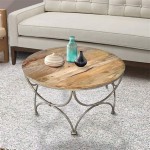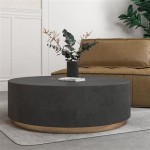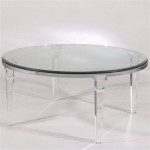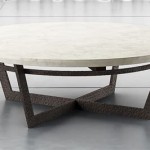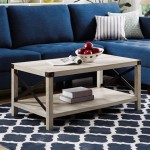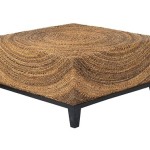Small Bedside Table Design: Optimizing Functionality and Style in Compact Spaces
The bedside table, often overlooked, is a crucial element in bedroom design. It provides a convenient surface for essential items, such as lamps, books, and electronic devices, and contributes significantly to the overall aesthetic of the room. In smaller bedrooms, selecting the right bedside table design becomes even more critical. A well-chosen small bedside table can maximize functionality while minimizing clutter, creating a more organized and visually appealing space.
The ideal small bedside table seamlessly blends form and function. It should be appropriately sized for the available space, offering sufficient storage without overwhelming the room. The design should also complement the existing décor, enhancing the overall style of the bedroom. Consideration must be given to the user's specific needs and preferences, ensuring the table meets their individual storage and accessibility requirements.
Choosing the Right Size and Dimensions
Size is arguably the most important factor when selecting a small bedside table. In a confined space, every inch counts. It is essential to accurately measure the available area beside the bed and choose a table that fits comfortably without obstructing movement or making the room feel cramped. Consider the height of the bed; the tabletop should ideally be at or slightly below mattress height for easy access to items placed on it.
A table that is too large will dominate the space and make the room feel smaller. Conversely, a table that is too small may not provide adequate storage and could appear disproportionate. A general guideline is to choose a table that is approximately 18-24 inches wide and 12-18 inches deep. The height should be between 24 and 30 inches, depending on the height of the bed. These dimensions provide a sufficient surface area for essential items while maintaining a compact footprint.
When measuring the available space, consider any obstructions, such as electrical outlets, radiators, or window frames. These factors may limit the size and placement of the bedside table. It is also essential to consider the depth of any drawers or shelves to ensure they can be fully opened without hitting the bed or other furniture.
The depth of the table is a key consideration. If the table is too deep, it may protrude too far into the room, making it difficult to navigate. A shallower table, on the other hand, may not provide enough storage space. Evaluate the items that will be stored on the table and choose a depth that accommodates them comfortably.
Exploring Different Storage Options
The storage capacity of a bedside table is another important factor to consider, particularly in small bedrooms where space is at a premium. Various storage options are available, each with its own advantages and disadvantages. The best choice depends on the individual's specific needs and the types of items they wish to store.
Tables with drawers offer concealed storage, which is ideal for items that are not frequently used or that need to be kept out of sight. Drawers can also help to keep the tabletop clutter-free. The number and size of the drawers should be considered based on the storage requirements. A single drawer may be sufficient for smaller items, while larger drawers can accommodate books, magazines, or electronic devices.
Open shelves provide easy access to items such as books, magazines, or decorative objects. They can also create a more open and airy feel in the room. Shelves can be fixed or adjustable, allowing for customization of the storage space. The height between shelves should be considered based on the size of the items that will be stored. Open shelving can also be combined with drawers to offer a combination of concealed and accessible storage.
Some bedside tables feature a combination of drawers, shelves, and even small cabinets. These designs offer the most versatile storage options, allowing for a wide range of items to be accommodated. The layout of the storage compartments should be carefully considered to ensure they are easily accessible and meet the individual's needs.
Another storage option to consider is a bedside table with a built-in charging station. These tables typically feature USB ports and electrical outlets, allowing for convenient charging of electronic devices. This can eliminate the need for extension cords and power strips, reducing clutter and improving the overall aesthetic of the room.
For those who prefer a minimalist approach, a simple bedside table with a single shelf or drawer may be sufficient. These designs are typically more compact and less visually intrusive, making them ideal for very small bedrooms. They are best suited for individuals who only need to store a few essential items.
Material and Style Considerations
The material and style of the bedside table should complement the existing décor of the bedroom. A wide range of materials are available, each with its own unique aesthetic and durability characteristics. Common materials include wood, metal, glass, and plastic.
Wooden bedside tables are a classic choice, offering warmth and natural beauty. Different types of wood, such as oak, maple, and walnut, have varying grain patterns and colors. Wood can be stained or painted to match the existing furniture in the room. Solid wood tables are generally more durable than those made from engineered wood, such as particleboard or MDF.
Metal bedside tables offer a more modern and industrial look. They are typically made from steel or aluminum and can be powder-coated in a variety of colors. Metal tables are durable and easy to clean. They can also be combined with other materials, such as wood or glass, to create a more unique and interesting design.
Glass bedside tables offer a sleek and contemporary look. They can be made from clear, frosted, or tinted glass. Glass tables are easy to clean and can make a small room feel more open and airy. However, they are also more fragile than tables made from other materials.
Plastic bedside tables are a more affordable option. They are typically made from durable plastics, such as polypropylene or ABS. Plastic tables are lightweight and easy to clean. They are available in a wide range of colors and styles, making them a versatile choice for any bedroom décor.
The style of the bedside table should also be considered. Common styles include traditional, modern, contemporary, and rustic. A traditional bedside table typically features ornate details and a rich finish. A modern bedside table has clean lines and a minimalist design. A contemporary bedside table combines elements of both traditional and modern styles. A rustic bedside table features natural materials and a distressed finish.
Consider the existing color palette of the bedroom when choosing a bedside table. A table that complements the colors of the walls, bedding, and other furniture will create a more cohesive and harmonious look. Neutral colors, such as white, gray, and beige, are versatile and can easily be incorporated into any décor. Bold colors can be used to add a pop of color to the room.
The hardware on the bedside table, such as knobs and pulls, should also be considered. These small details can have a significant impact on the overall aesthetic of the table. Choose hardware that complements the style and finish of the table.
Ultimately, the best bedside table design is one that meets the individual's specific needs and preferences while complementing the existing décor of the bedroom. By carefully considering the size, storage options, material, and style of the table, it is possible to create a functional and visually appealing space, even in a small bedroom.
Beyond the functional and aesthetic considerations, it's also worth considering the sustainability aspect of your bedside table choice. Opting for tables made from sustainably sourced wood or recycled materials can contribute to a more eco-friendly home. This not only benefits the environment but also adds a layer of ethical consideration to your design choices.
The integration of technology is also becoming increasingly relevant in bedside table design. Some modern tables incorporate features like wireless charging pads, Bluetooth speakers, or even integrated lighting. These additions can enhance the convenience and functionality of the table, catering to the demands of a digitally connected lifestyle.

27 Small Bedside Tables To Save Space In Compact Bedrooms

Small Curved Floating Bedside Table With Drawer Round Nightstand Shelf Rustic Mango Wood Wall Room

Boyd Sleep Prato Modern 1 Shelf Nightstand Black Small Bedside Table With Storage And Space Saving Design Prbk151ns The Home Depot

Narrow Bedside Table Small Slim Cute Light With Shelf Cube

27 Small Bedside Tables To Save Space In Compact Bedrooms

2 Tier Nightstand Simple Style Design End Table Bedside Tables For Small Spaces Easy Assembly 1 Pack Wood Side With Storage Shelve Living Room Study Bedroom Sofa White Com

Ulf Modern Black Nightstand Small Bedside Table

Small Curved Bedside Table With Open Shelf Minimalist Drawer Mango Wood Slim Wooden Nightstand

Maykoosh Black 1 Drawer Wooden End Table With Storage Shelf Nightstand And For Small Spaces Bed Side

Modern Double Layer Bedside Cupboard White With Creative Flower Design Ins Style Home Simplicity Storage Rack For Bedroom
Related Posts

